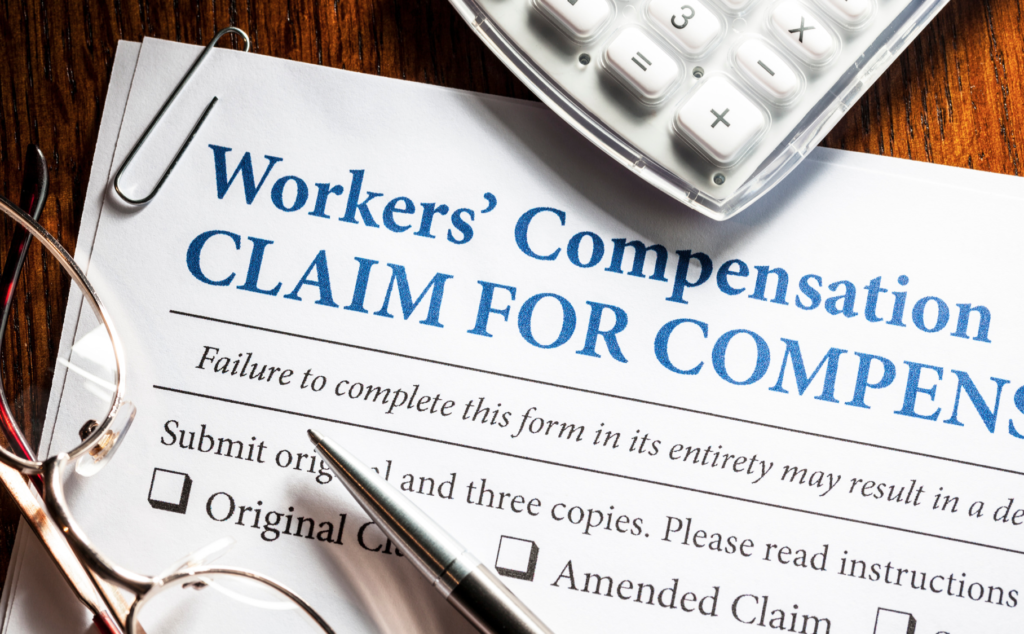Each industry has its own unique risks that directly affect the cost of workers’ compensation insurance (also known as workman’s compensation or workman’s comp). Since each business requires unique coverage, there is no standard cost. Coverage is tailored to protect companies based on the probability of injury.
One rough way to calculate the cost of workers’ compensation insurance would be using the formula:
Workers’ Class Code Rate x Claims Experience Modifier x (Payroll / $100) = Premium
The most common factors that affect workers’ compensation insurance include the location (state), industry environment, company payroll, and the company claims history, each of which we will dive more deeply into below. Because these factors range so widely, it is recommended that you contact your broker to get an exact quote.
Factors That Impact Workers’ Compensation Insurance Rates
1. Location (State)
Each state has its own by-laws, but most require businesses to purchase workers’ compensation insurance to ensure employee safety.
There are some exceptions to the rule. In Arkansas, businesses with less than three employees are exempted from purchasing workers’ compensation insurance. In Illinois, the Workers’ Compensation Reform Bill passed in 2005 increased indemnity payments to permanent partial disability injuries and skewed courts in favor of paying out claims. As a result, Illinois ranks as the seventh most expensive state in the country when it comes to Workers’ Comp rates.
2. Industry Environment
The environment of every industry depends on the work done. From blue collar to white collar, manual labor to administrative, risks involved in the workplace vary from business to business.
A construction company would obviously pay for higher premiums than a financial services business. Tradesmen have a greater chance of getting hurt while at work than those in front of a computer all day. In addition, injuries for computer-heavy workers are typically different from those of manual laborers.
3. Company’s Payroll Amount
When hiring more employees to your business, the probability of workplace related injury increases. Because workers’ comp insurance covers your employees’ lost salary in case they are unable to work, the total payouts are also more likely to be higher. This increases the overall cost of your company’s premiums.
4. Claims History
The more years you are in business and the less claims you make, the lower your premium. Just like a credit score or personal car insurance, workers’ comp agencies look at previous liabilities. Where risks are lower, potential costs are lower.
If you’re a newer business or start-up, you’ll have less of a background to assure an insurance company that you are low risk. As your company gains a positive history, you should see rates go down.
How can you lower your workers’ comp insurance rates?
First, make sure every employee is properly classified, since rates among different types of employees vary greatly. For example, Workers’ Comp rates range anywhere from $0.15 per $100 in payroll for clerical workers to $38 per $100 in payroll for laborers.
Second, consider the level of expertise of the carrier and agent you choose to work with. It is not unusual that low premiums are offered by carriers who have little to no resources in the claims handling department. Poor claims handling can affect an insured for 5-10 years. What insurers want to see is a claim adjuster who understands their business and will aggressively defend a claim on the insured’s behalf.
Third, take a proactive approach to protect against claims. Here are some tips that you can implement to your business to instill a safer workplace environment:
- Provide safety precaution equipment, such as helmets and safety vests, to minimize serious workplace injuries
- Train new hires about safety protocols and how to develop safe workplace habits
- Place hazard signs and labels where there is a high risk for injury
- Remove clutter throughout your workplace especially around walkways and exits
An Experienced Workers’ Comp Provider Can Help Lower Your Rates
Often, we find buyers have the misconception that all brokers provide the same premiums. In reality, brokers’ rates can vary up to 20% and have limited options to choose from.
“Since there are several different ways to structure workers’ compensation, we put together a long-term strategy, based on your goals and unique demographics.” says Tracie Rasmussen, CEO of BlueStone Advisors
An example of this may be for a manufacturing business. This client often has different departments with varied needs when it comes to insurance. From the shop workers to the office staff, there could be a range of coverage from 35k to 100k all in one organization. Because of this we make it our goal to understand the business internals and get to know the objectives.
“We genuinely value your employees and your company’s success just as much as you do,” says Andy Royce, President of BlueStone Advisors. “We have a thorough understanding of the balance of driving down premium, rates, and proper classification.”
What we don’t like to see for the clients we take care of, are rates suddenly increasing from year to year without a claim. That would be a sign of mismanagement of an insurance plan. Instead, we are familiar with the carriers and recommend an appropriate partner that has all necessary resources when a claim does happen.
Looking to better protect your commercial assets? Contact BlueStone Advisors today for a free consultation on how to switch commercial insurance providers for better coverage and transparent policies.

